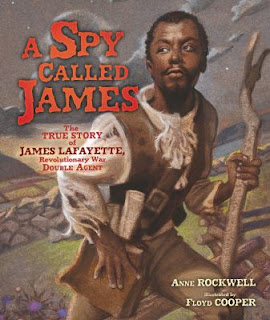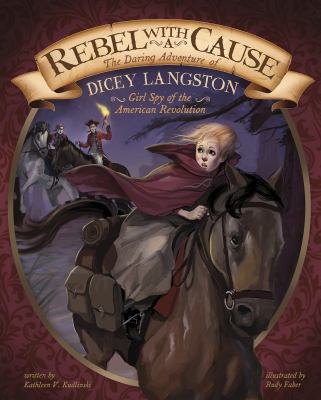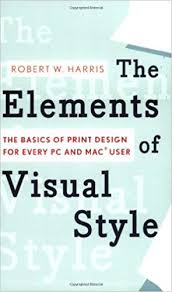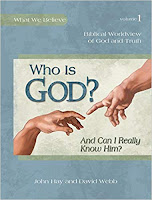I created a Reading Journal from a free download at ModernMrsDarcy.com.
My first step was to make a list of Books I Want to Read. Well, that could take forever, but I'm often coming across recommendations from other people. I already have a long queue of books on my shelf that I want to read now, so I don't want to add to that stack. Neither do I want to forget about the books that intrigued me, that I do want to read sometime, just not right now. So, these pages in the reading journal will help me not forget. I organized the lists according to who recommended it or by genre.
I like that journal has two types of pages for recording books you've read. One is a short form with the basic information and a short space to write notes. Another offers more space for recording longer notes, quotes, comments, etc.
Just for grins, here are pictures of "his" and "hers" bedside books.
I counted 132 books on my side of the bed. That's not counting the books on shelves in the rest of the house that I still want to read, nor the list of books in my reading journal. So many books! So little time! (To be fair to my husband, most of my books are novels and children's books; he's reading heavier stuff that takes more time and mental energy to process!)
For January, the total was 25*.
* Yes, many of these books are short children's books that only took me 20-30 minutes to read. But they did take up my "free reading time" (i.e. not reading to the kids during school), so they count. :-) I also counted the audio book we listened to as a family while driving.
Lad : A Dog
by Albert Payson Terhune
My oldest daughter and I have been sharing a love for Terhune's dog stories (mostly about collies). I read a number of these when I was young (and the books were my dad's). They were written in the 1920s and 1930s mostly. They have big vocabularies and some diatribes about things that seem kind of odd now, almost 100 years later. But they are good stories for dog lovers. I have enjoyed sharing them with my daughter.
Where Was Patrick Henry on the 29th of May?
by Jean Fritz
We have been learning about the beginnings of the American Revolution in school, so this month included a bunch of Jean Fritz books about various famous historical figures. I won't go into detail about all of them, as the titles are pretty self-explanatory. The books are interesting, the pictures are engaging, and my children enjoyed listening to them. (I include them on my reading list because I read myself first before reading them out loud to the kids.)
Will you sign here, John Hancock?
by Jean Fritz
Why don't you get a horse, Sam Adams?
by Jean Fritz
Shh! We're Writing the Constitution
by Jean Fritz
What's the Big Idea, Ben Franklin?
by Jean Fritz
By interesting coincidence, I read this book on Franklin's birthday, January 17! Typical Jean Fritz biography.
George Washington's Breakfast
by Jean Fritz
This was a cute story about a young boy named after George Washington. He is a curious boy and wants to find out everything he can about his namesake. One day he wonders what George Washington ate for breakfast and embarks on a research journey, involving his whole family, to find out. I love that his parents eagerly help him in his search and provide opportunities for him to learn, rather than being too busy with their own lives and agendas to engage with him in his interests. Oh, that I could learn to be that kind of parent!
The Double Life of Pocahontas
by Jean Fritz
This book had too much guessing in it for me. Piecing together the small bits of historical information that we have, the author uses a lot of "she may have...", "she might have...", "she must have..." done this, thought that, felt this. Too much speculation for my taste. This book (along with others I've read about colonists and settlers, of various nationalities) does make me think. It is a common practice in such books to fail to distinguish between the behavior of colonists and settlers who practiced an outward form of "Christianity" (but did not truly follow Christ's commands nor act like him) and those who were truly Christ-followers with a heart to proclaim the good news of salvation from sin (and fear of evil spirits) through faith in Jesus Christ. It breaks my heart that so many so-called "Christians" attempted to convert the Native Americans -- not to Christ, but to their own culture. For instance, in this book, Pocahontas is dressed up in English clothes so that she will "at least look like a Christian". And the viewpoint of many in English seemed to be that their culture and civilization were superior to anyone else's. They viewed the Indians as "savage", "barbarous", "uncivilized", and perhaps sub-human.
This is not the viewpoint of true Christianity, as described in the Bible. Biblical Christianity seeks to make known the one and only true God (Yahweh), but not to promote one culture over another. By all accounts, the men who settled Jamestown were lazy, unwilling to work, stealing from and cheating the Indians, willing to kill at the slightest provocation. Not true Christ-followers. No wonder the Indians wanted nothing to do with the Englishman's god. How different things could have been if the people had come with a mind to live Christ-like lives (i.e. self-sacrificing, humble, peace-making) rather than to find riches, power, or fame!
Most books (including this one) imply that the settlers should have just left the Indians to their own religion and not tried to "convert" them or preach Christ to them. They also seem to attribute any preaching of Christ and any conversions of Indians to false motives. I agree that they should not have tried to force "conversions" or merely focus on culture. And it may well be that many Indians "converted" out of convenience (or pressure). But a true Christ-follower could never be content (or obedient to Christ) without "going into all nations, making disciples and teaching them to obey all that I commanded you."
The Lost Colony of Roanoke
by Jean Fritz
Why Not, Lafayette?
by Jean Fritz
I don't guess I have ever really known much about Lafayette, other than hearing the name. I actually thought he was a pirate or explorer (maybe that was Jean Lafitte?). So, this was an interesting read for me. I learned about his involvement in both the American and French revolutions. The book also pointed out how many towns, counties, schools, etc. are named after him (think Fayetteville, Lafayette, and other versions of the name). One outstanding quote: "Liberty, he realized, could not be won once and for all. It had to be fought for over and over."
Guns for General Washington
by Seymour Reit
Colonel Henry Knox and his 19 year old brother Will undertake the daunting task to move 183 cannons from Fort Ticonderoga to Boston in the dead of winter. The big guns were used to end a stalemate with the British and free the city of Boston in March 1776. This was a fascinating story.
Squalls Before War: His Majesty's Schooner Sultana
by Ned Bustard
The story of sailors on a British schooner patrolling the waters of the American coast for smugglers who are seeking to evade taxes in the years leading up to the American Revolution. It gives the perspective of the British regarding the colonists' protest against England. Although the conversations and thoughts of the characters are fiction, the events are based on the log books kept by the lieutenant and master of the ship during the five years they were at sea. There is a lot of nautical jargon, which was a bit difficult for me to follow, but there is a glossary in the back explaining all the terms (if you're willing to keep flipping back and forth). There are excerpts from the log entries interspersed with the text of the story. They are written in a fancy script typical of the day, which made it a little difficult to decipher. Younger readers would likely find it impossible. But you can still follow the story quite easily without reading the log entries.
Laugh out loud quote: The captain and lieutenant are having dinner with George Washington at his home. Washington is quoted as saying, "If trade can be taxed, then everything we have can be taxed. We could see a day when they taxed our property or food or clothing or anything!"
Oh the irony!!
by Catherine Chambers
I must have picked this up at the library book sale some time. Like Lafayette, I had him placed in the wrong historical period. I was thinking he was at the Alamo (no, that was Davy Crocket). He was actually blazing the trail from North Carolina to Kentucky before the Declaration of Independence. This was a good picture book (though older style) introduction to Daniel Boone. I have a longer biography of him and I guess I'll be bumping it up on my priority list. Both will go along well with our current study of this time period in school.
Patriots, Redcoats, and Spies
by Robert J. Skead and Robert A. Skead
This book was written by a father/son team who had ancestors in the Connecticut militia during the American Revolution. We attended an event at Kleb Woods Nature Center where we learned about the Culper Spy Ring that served George Washington during the war. That same day I took the kids to the library and while I was showing one of them how to use the library catalog, I typed in "spies" and found this book. When I saw the description mentioned the Culper Spy Ring, I decided to grab it and try it out. After their father is shot by British soldiers, twin boys John and Ambrose must complete their father's mission to deliver a secret message to General George Washington. They encounter many adventures and overcome many obstacles before accomplishing their mission. It was a good, clean book; fast-paced and interesting; some fighting and bleeding, but not gory. I liked it and passed it on to the kids. And there's a sequel...
Now the Clark boys are 15 years old and are given a secret mission to deliver a large load of gunpowder to the Continental Army. They are to use submarine called the "Turtle", towed behind their sailboat. Their older brother leads a diversion group over land, carrying a smaller load of powder in a wagon convoy. An unknown informant tips off a vengeful British officer who intercepts the wagons and captures the Clarks' older brother. After the younger brothers successfully complete their mission, they take on another mission to use the "Turtle" to attach a gunpowder bomb to a British ship. They narrowly succeed and then proceed to embark on a rescue mission to save their brother from execution in a British fort. This book is a little more graphic in the battle scenes than the previous one, but not as gory as some others I've read. It does not glorify war; in fact, the characters express sorrow and revulsion at having to kill or wound their enemies (even when they thought they would like nothing better than to kill and get revenge). Many of the characters call on and credit "Providence" (rather than luck) for their help and success.
Submarines, Secrets, & A Daring Rescue
by Robert J. Skead and Robert A. Skead
A Spy Called James: The True Story of James Lafayette
Revolutionary War Double Agent
by Anne Rockwell
Continuing with the spy theme, this is a beautiful picture book about a slave who works as a double agent -- pretending to be a British spy while actually spying on the British for the French general Lafayette and the American Patriots. He hoped to win his freedom by serving in the war, but that was only granted to soldiers, not spies. However, Lafayette himself wrote a letter to the Virginia government to petition for his freedom, which they finally granted. Beautiful illustrations and excellent story.
Rebel with a Cause :
The Daring Adventure of Dicey Langston,
Girl Spy of the American Revolution
by Kathleen Kudlinski
This is a picture book about a 10 year old girl who secretly helps the Continental Army (including 2 of her older brothers) and warns them about a bloodthirsty Loyalist solider who is about to attack them.
Secrets of American History - Revolutionary War
The Founding Fathers Were Spies
by Patricia Lakin
A great introduction for young readers to how George Washington won the war by out-spying the British. Discusses the Culper Spy Ring and the various techniques they used to pass secret messages.
Johnny Tremain
by Esther Forbes
A famous classic about a young silversmith apprentice in pre-revolutionary Boston. The proud Johnny encounters an accident that burns and disfigures his hand, causing him to be unable work as a silversmith any longer. As he searches for another job, he gets caught up with the Sons of Liberty, meeting such characters as Sam Adams, Paul Revere, and John Hancock. He is instrumental in spying on the British prior to the Battle of Lexington and Concord. I remember being fascinated with this book in middle school, but had not read it since then. Some could accuse it of being a bit too slow in places, as it focuses on Johnny's character development more than plot action. We listened to this as a family while we drove throughout December and January. We probably never would have gotten through it if I had read it out loud. It is not gory, but it does have more language (d----- and h---) than I would normally allow my kids to read or hear. The timing of listening to this was perfect, since it give a descriptive account of the "Shot Heard Round The World" just as my older kids were writing about it in their writing lessons.
The Cabin Faced West
by Jean Fritz
I've seen this one on many book lists and finally got around to reading it. It is the story of a young girl dealing with loneliness as her family settles in the western frontier of Pennsylvania, some years after the American Revolution (1784). She longs to go back to Gettysburg until she gets a surprise visit from George Washington and realizes she wants to be part of settling this new country.
The Story of Jeremy Cricket
The Story of Robin Redbreast
The Story of Charlotte the Caterpillar
The Story of Benjamin Bee
retold by Pat Wynnejones from Mrs. Gatty's Parables of Nature
Four short books in a series called "Hedgerow Tales". The cricket story is a parable of longing for a home we don't yet have (i.e. a heavenly one). The robin story is about trusting God to provide our needs, even in difficult times. The caterpillar learns there is a difference between true faith and believing everything you are told. The bee learns that everybody has an important, though different, job.
The Elements of Visual Style
by Robert W. Harris
I found this while searching the library for my oldest son who is interested in graphic design. It talked about how to arrange type, space, and art to make documents attractive and useful. It gave a lot of examples of what not to do. It could have used a few more examples of what the "better" versions alongside the "bad" versions. Overall, it was an interesting and useful little book. I will probably be noticing the things he pointed out as I look at professionally (and otherwise) designed documents.



































 Life of Fred : Cats
Life of Fred : Cats 











